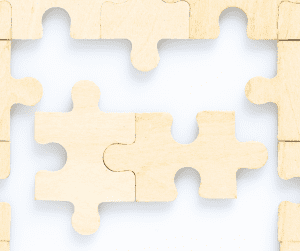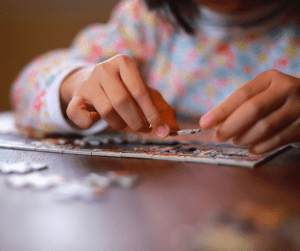Do you love spending hours completing jigsaw puzzles? If so, you’re in luck! In this blog post, we will discuss 10 types of jigsaw puzzles that are sure to keep you entertained for hours on end. Whether you prefer traditional jigsaw puzzles or something a little more challenging, we have got you covered. So what are you waiting for? Read on to discover the 10 types of jigsaw puzzles that are sure to challenge and entertain you!
History of Jigsaw Puzzles
The history of jigsaw puzzles can be traced back to the 1760s when John Spilsbury, a London mapmaker, created the first puzzle by mounting a map on a sheet of wood and cutting around the contours of the countries. Spilsbury’s puzzles were designed to help children learn geography, but they quickly became popular among adults as well. It wasn’t long before other types of puzzles began to appear, including those with pieces in the shape of animals, flowers, and other objects.
Today, there are all sorts of jigsaw puzzles available, from traditional puzzles to those with hundreds or even thousands of pieces. No matter what your skill level is, there is a puzzle out there that is perfect for you. So what are some of the different types of jigsaw puzzles? Read on to find out!
10 Types of Jigsaw Puzzles
1. Wooden Jigsaw Puzzles

Wooden jigsaw puzzles are some of the most popular types of puzzles available. These puzzles are usually made from high-quality wood, such as maple or cherry. Wooden jigsaws are often considered to be more challenging than traditional cardboard puzzles, as the pieces can be more difficult to fit together. However, many people find the challenge of a wooden puzzle to be part of the appeal. If you are looking for a high-quality puzzle that will provide hours of entertainment, a wooden jigsaw puzzle is a great option.
2. Cardboard Jigsaw Puzzles
Cardboard jigsaw puzzles are the most common type of puzzle. This puzzle type is typically made from thin cardboard and has interlocking pieces. Cardboard puzzles are usually less expensive than wooden puzzles and can be a great option for those on a budget. However, they are not as durable as wooden puzzles and can be more difficult to assemble. The puzzle pieces can also be more difficult to handle, as they are often smaller and less sturdy than wooden pieces.
3. 3D Jigsaw Puzzles
If you are looking for a truly unique puzzle experience, try a 3D jigsaw puzzle. These puzzles are designed to create a three-dimensional image when assembled. 3D puzzles can be made from wood, plastic, or even metal and are often more challenging than traditional two-dimensional puzzles. If you enjoy a challenge, a 3D jigsaw puzzle is a great option.
4. Mini Jigsaw Puzzles
Mini jigsaw puzzles are a great option for those who want a challenging puzzle but don’t have a lot of time to spare. These puzzles are typically smaller than traditional puzzles and can be completed in an hour or less. Mini puzzles are also a great option for children or adults with small hands, as the pieces are easier to grip.
5. Large Jigsaw Puzzles
Large jigsaw puzzles are perfect for those who want a real challenge. These puzzles typically have 1,000 pieces or more and can take days or even weeks to complete. You can use the floor space of a room to assemble these types of puzzles, which is one of the benefits of working with larger pieces. Large jigsaw puzzles are perfect for those who enjoy a challenge and have the time to devote to completing them.
6. Photo Jigsaw Puzzles
Photo jigsaw puzzles are a great way to turn your favorite photos into a fun and challenging puzzle. These puzzles are made by printing a photo onto cardboard or wood and then cutting the pieces out. Photo puzzles can be made from any size photo and make a great gift for friends and family.
7. Shape Jigsaw Puzzles
Shape jigsaw puzzles are a fun twist on traditional puzzle. These puzzles have pieces that are cut into different shapes, such as animals, flowers, or objects. Shape puzzles can be made from wood or cardboard and are a great option for those who want a challenge.
8. Word Jigsaw Puzzles
Word jigsaw puzzles are a great way to test your puzzle skills and your knowledge of words. These puzzles have pieces that are cut into the shape of letters, which you then must use to spell out words. Word puzzles can be made from wood or cardboard and make a great gift for those who love word games.
9. Colouring Jigsaw Puzzles
Colouring jigsaw puzzles are a great way to add a creative touch to your puzzle-solving. These puzzles have pieces that are cut into the shape of a design, which you then colour in with markers or paint. Colouring puzzles can be made from wood or cardboard and make a great gift for those who enjoy art projects.
10. Educational Jigsaw Puzzles

Educational jigsaw puzzles are a great way to learn while you play. These puzzles have pieces that are cut into the shape of numbers, letters, or shapes, which you then must use to complete an educational activity. Educational puzzles can be made from wood or cardboard and make a great gift for those who love learning.
How to Solve a Jigsaw Puzzle
1. Look at the big picture. Literally. Start by looking at the whole puzzle to get an idea of what it is supposed to look like when it’s finished. This will help you determine where to start and how to proceed.
2. Find the edge pieces. These are the easiest to spot, as they have only one side that is smooth (unlike the other pieces, which have jagged edges). Once you’ve found all of the edge pieces, you can begin piecing them together to create the perimeter of the puzzle.
3. Work in the middle. Once you’ve completed the edge of the puzzle, you can start working in the middle. Begin by finding pieces that have similar colours or patterns and piecing them together. As you work, you’ll gradually start to see the big picture emerge.
4. Don’t force it. If a piece doesn’t seem to fit, don’t force it. Sometimes, you may need to rotate a piece or look at it from a different angle before it will fit. And if you can’t figure it out, that’s okay! Just set the piece aside and come back to it later.
5. Take a break. If you get frustrated or feel like you’re not making any progress, take a break! Go for a walk, take a nap, or just step away from the puzzle for a little while. You’ll be surprised how much fresh eyes can help.
Jigsaw puzzles are a great way to pass the time and challenge yourself. There are many different types of jigsaw puzzles to choose from, so there’s sure to be one that’s perfect for you. So grab a puzzle and get started!
